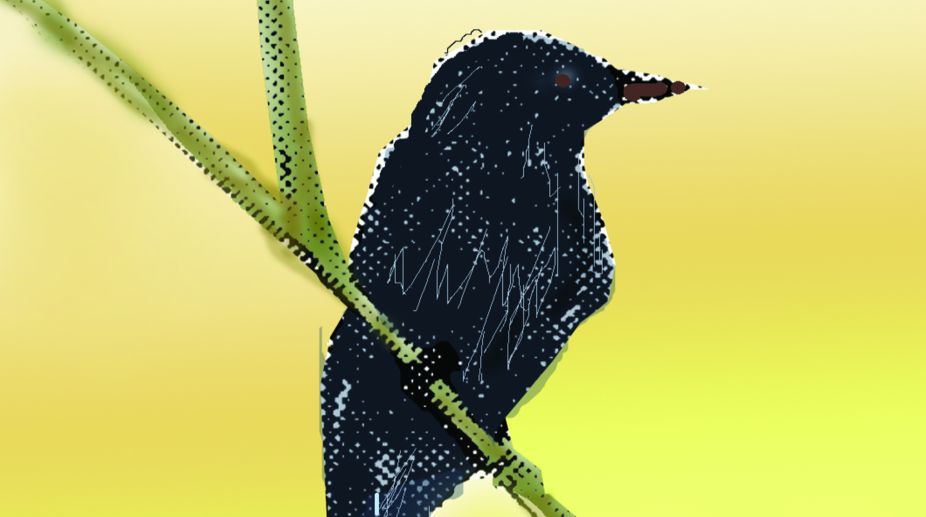The black drongo is one of the few birds that practically everyone knows, though we are, as a nation, singularly unaware of the creatures that share this India that is Bharat with us, and the charm they lend to life here. It is not a big bird, but it is bold and black and energetic, and endowed with a distinctive, deeply-cleft tail the kind of bird that no one can help noticing, and so it is noticed and known.
Its names proclaim its character. It is the king crow in English, “bhim raj” in Hindi, and “valiyan” in Tamil, the last meaning “the powerful one”-no doubt it has other names in other Indian languages indicative of its might in such small compass.
Advertisement
Its mastery of the air, and ability to twist and turn at top speed, and its fearlessness make it the terror of all nest-raiders that may imprudently come too close to its nest. It believes in the dictum: “Thrice is he armed who has his quarrel just, But four times he who gets his blow in fust” and since justice is on its side when crows and similar thieving birds come near its nest, it is actually seven times armed! It shoots up into the air on quick-beating, broadly triangular wings, and plummets down on the unfortunate crow or kite as if it would transfix the enemy with its beak; invariably the trespasser beats a hasty retreat, and the pair of king crows follow it for some distance, speeding the parting guest.
Many observers have pointed protection from nest robbers. Such associations, which are not really symbiotic because only one party to it is benefited, are not uncommon among birds and beasts.
King crows like to perch high, on telegraph wires, posts, and the exposed branches of a tree, keeping a sharp look-out for insects and other prey from their vantage point; where there is pasture, they also go riding on the backs of grazing cattle and goats, snapping up the insects that their mobile perches disturb. Unlike bee-eaters, king crows often come down to the ground to deal with prey that they can see there.
It is in the air that one really sees the bird at its best. The broad but short and sharply pointed wings are a dark, translucent brown when expanded and so is the forked tail, when fanned out; the wings and the tail, by their sudden changes from translucency when open to black opacity when shut, provide a visual complement to the dizzying twists of the bird’s flight, and there is even an audible echo of these movements in the whir that the sharp expansions and contractions of the pinions and rectrices produce.
Early in the morning, before sunrise, king crows indulge in a chorus. Other drongos also do so, and some of them, like the white bellies and grey drongos, have musical voices by comparison. But though the pre-dawn calls of king crows have a harsh sharpness, at that hour, when it is cold and the blackness is turning to a clear grey, they have an exhilarating quality.
Through the day they are usually silent, but as nightfall approaches they grow vocal again, and often come out with a quick grating double call, almost identical with the call of the shikra.
Whether this is mimetic or just due to coincidence is a thing I do not know, though it is true that drongos, as a family, are sometimes given to mimicry. But then, why should this shikra-call be sounded only at roosting time and not early in the morning as well?
This was published on 12 June 1967











